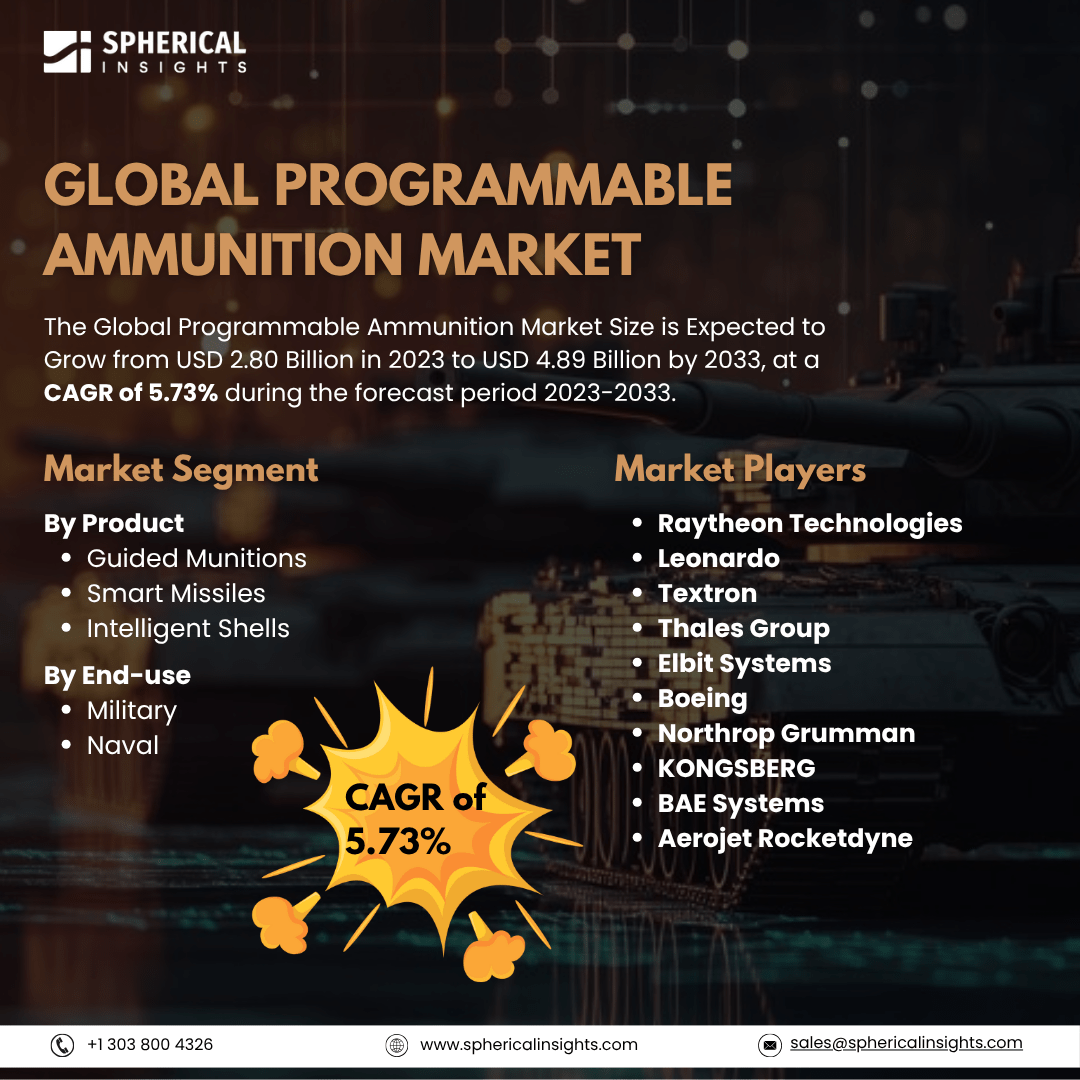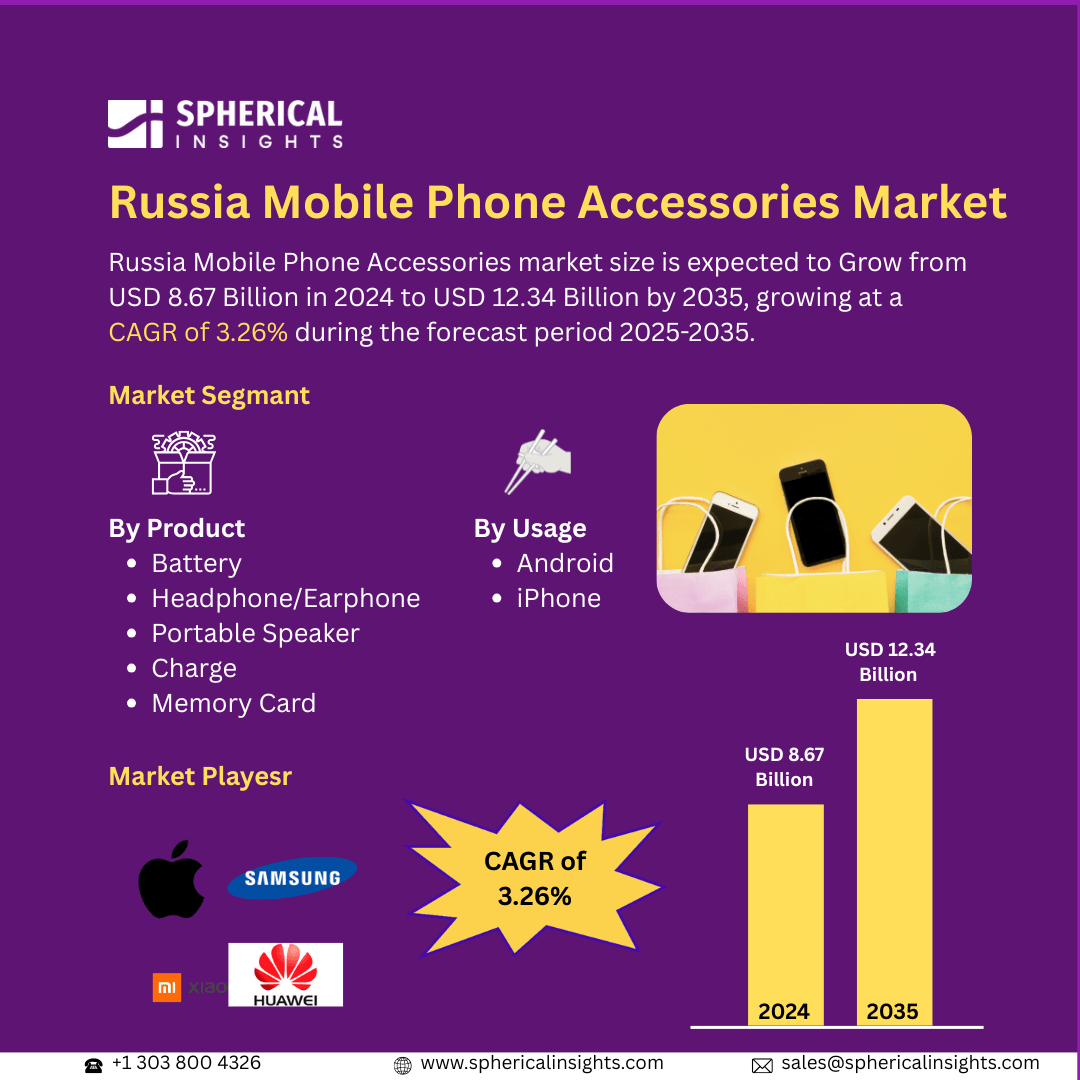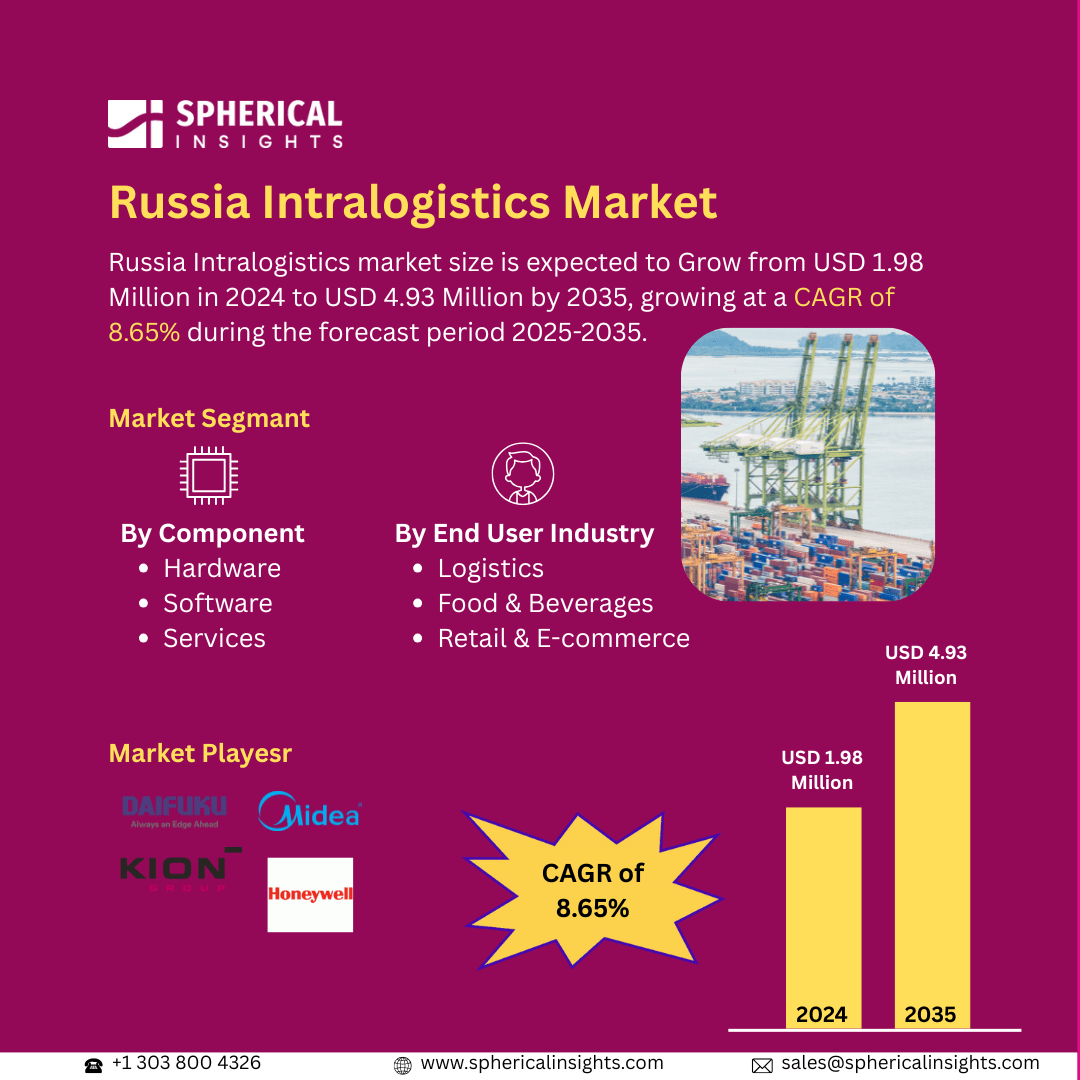Global Programmable Ammunition Market Size To Exceed USD 4.89 Billion by 2033
According to a research report published by Spherical Insights & Consulting, The Global Programmable Ammunition Market Size is Expected to Grow from USD 2.80 Billion in 2023 to USD 4.89 Billion by 2033, at a CAGR of 5.73% during the forecast period 2023-2033.
Browse 210 market data Tables and 45 Figures spread through 190 Pages and in-depth TOC on the Global Programmable Ammunition Market Size, Share, and COVID-19 Impact Analysis, By Product (Guided Munitions, Smart Missiles, Intelligent Shells, and Others), By End-use (Military and Naval), and By Region (North America, Europe, Asia Pacific, Latin America, Middle East, and Africa), Analysis and Forecast 2023 – 2033.
The programmable ammunition market refers to the global industry involved in the development, production, and sale of advanced munitions that can be programmed before or during firing to perform specific functions. These munitions include airburst, delayed detonation, or impact detonation capabilities and are typically used in defense and military applications to enhance accuracy, lethality, and tactical effectiveness. Moreover, the programmable ammunition market is driven by rising defense budgets, increasing demand for precision-guided munitions, and advancements in smart weapon technologies. Growing global security threats and the need for enhanced lethality and accuracy in combat operations further fuel market growth, alongside modernization efforts by military forces worldwide. However, high development costs, complex integration with existing systems, and regulatory restrictions on advanced weaponry are key restraints hindering the growth of the programmable ammunition market, especially in developing regions.
The guided munitions segment accounted for the largest share of the global programmable ammunition market in 2023 and is anticipated to grow at a significant CAGR during the forecast period.
Based on the product, the global programmable ammunition market is divided into guided munitions, smart missiles, intelligent shells, and others. Among these, the guided munitions segment accounted for the largest share of the global programmable ammunition market in 2023 and is anticipated to grow at a significant CAGR during the forecast period. This is due to their widespread adoption, proven effectiveness, and compatibility with various platforms. Their precision reduces collateral damage, and growing demand in modern military operations makes them the most dominant segment among smart missiles, intelligent shells, and other programmable ammunition types.
The military segment accounted for a substantial share of the global programmable ammunition market in 2023 and is anticipated to grow at a rapid pace during the projected period.
On the basis of the end-use, the global programmable ammunition market is divided into military and naval. Among these, the military segment accounted for a substantial share of the global programmable ammunition market in 2023 and is anticipated to grow rapidly during the projected period. This is driven by the widespread adoption of programmable munitions in land-based operations. This is due to the increased use of land warfare vehicles such as tanks and armored personnel carriers, which utilize programmable ammunition to enhance combat effectiveness. Additionally, the growing demand for advanced ammunition in defense sectors contributes to this dominance.
North America is projected to hold the largest share of the global programmable ammunition market over the projected period.
North America is projected to hold the largest share of the global programmable ammunition market over the projected period. This is driven by high defense spending, continuous technological advancements, and the strong presence of leading defense contractors. The U.S. military’s focus on modernizing its armed forces and increasing investment in smart munitions significantly contribute to the region’s market dominance.
Asia Pacific is expected to grow at the fastest CAGR of the global programmable ammunition market during the projected period. This is driven by rising geopolitical tensions, increasing defense budgets, and rapid military modernization efforts in countries like China, India, and South Korea. The region’s focus on strengthening defense capabilities and acquiring advanced weaponry drives significant growth in this market segment.
Company Profiling
Major vendors in the global programmable ammunition market are Raytheon Technologies, Leonardo, Textron, Thales Group, Elbit Systems, Boeing, Northrop Grumman, KONGSBERG, BAE Systems, Aerojet Rocketdyne., and others.
Key Target Audience
- Market Players
- Investors
- End-users
- Government Authorities
- Consulting and Research Firm
- Venture capitalists
- Value-Added Resellers (VARs)
Recent Development
- In June 2024, Bofors launched the TRIDON Mk2, a sophisticated artillery system that combines programmable ammunition for improved precision and efficiency. With the aim of higher accuracy, longer range, and versatility, it enables customizable detonation parameters to meet mission requirements. This technology enhances targeting flexibility while reducing collateral damage. The TRIDON Mk2 will revolutionize contemporary artillery operations with its state-of-the-art technology.
Market Segment
This study forecasts revenue at global, regional, and country levels from 2023 to 2033. Spherical Insights has segmented the global programmable ammunition market based on the below-mentioned segments:
Global Programmable Ammunition Market, By Product
- Guided Munitions
- Smart Missiles
- Intelligent Shells
- Others
Global Programmable Ammunition Market, By End-use
Global Programmable Ammunition Market, By Regional
- North America
- Europe
- Germany
- UK
- France
- Italy
- Spain
- Russia
- Rest of Europe
- Asia Pacific
- China
- Japan
- India
- South Korea
- Australia
- Rest of Asia Pacific
- South America
- Brazil
- Argentina
- Rest of South America
- Middle East & Africa
- UAE
- Saudi Arabia
- Qatar
- South Africa
- Rest of the Middle East & Africa



